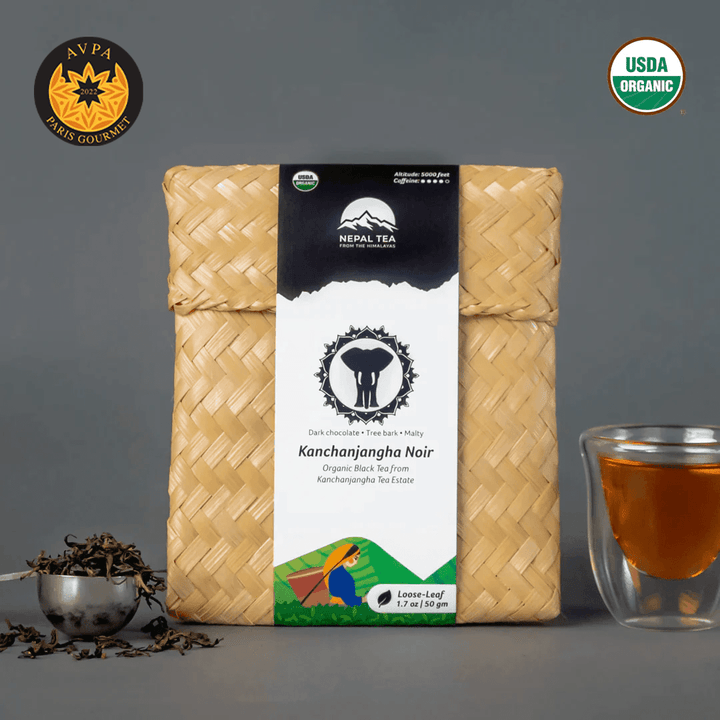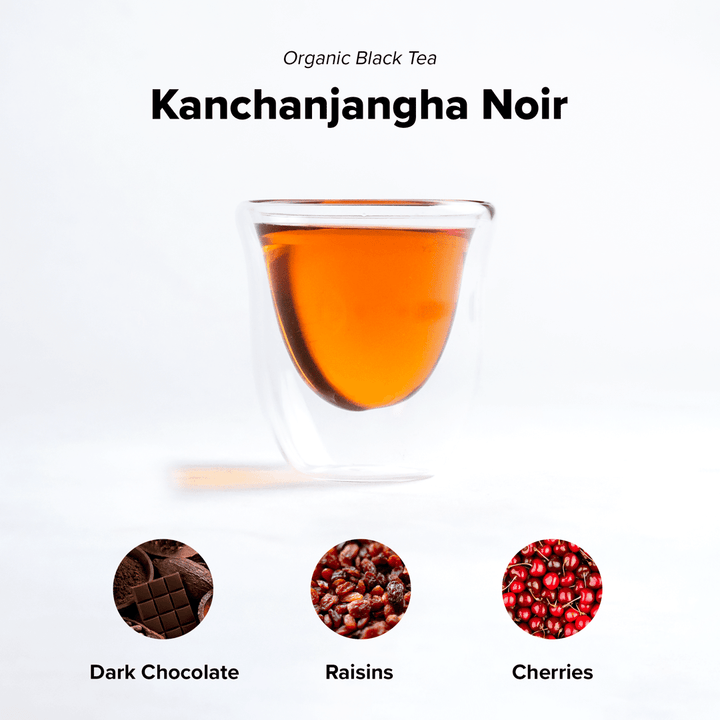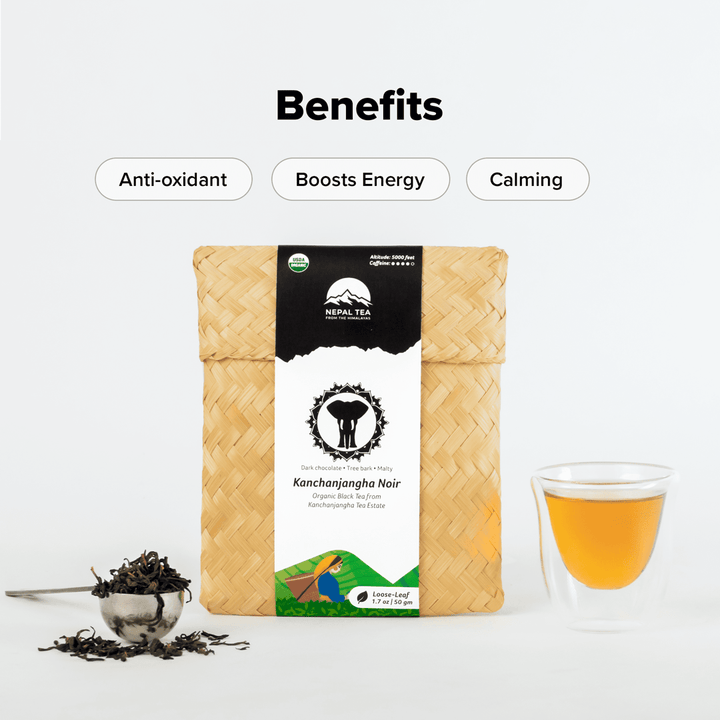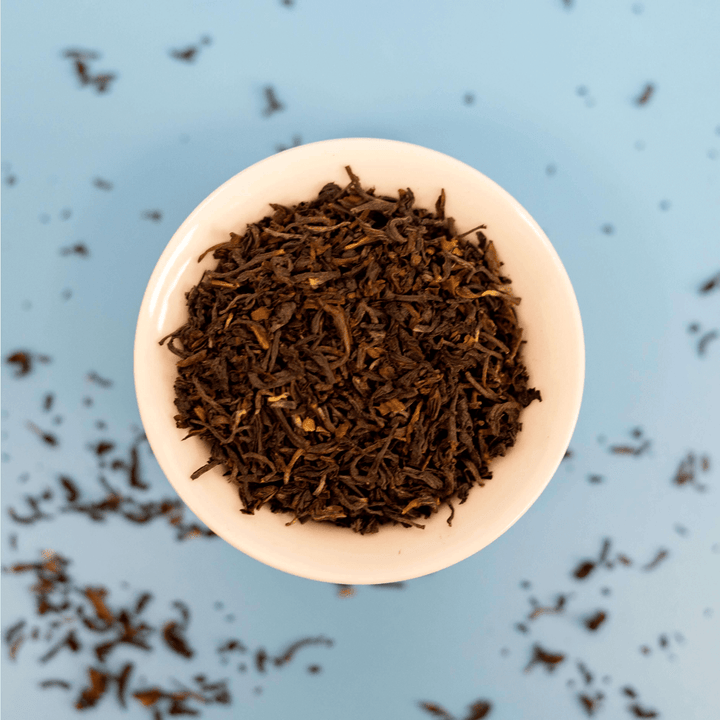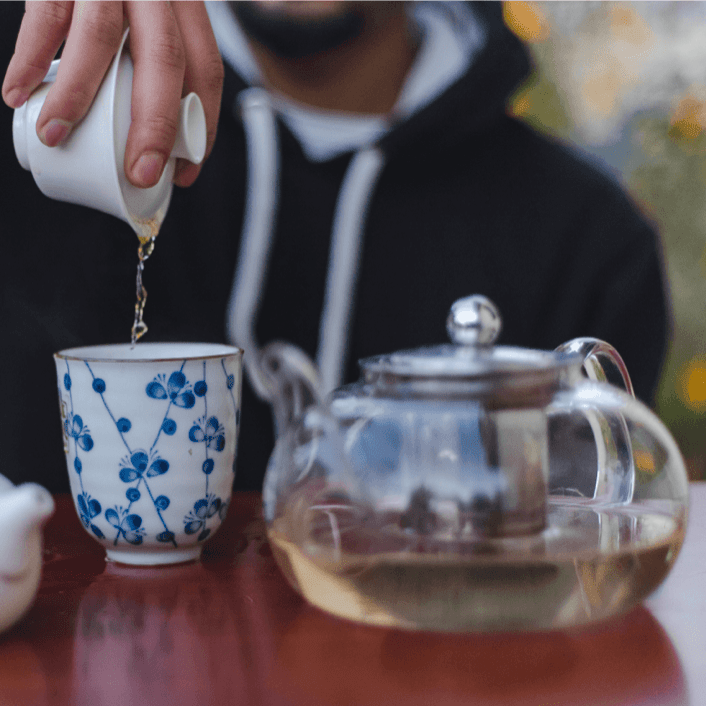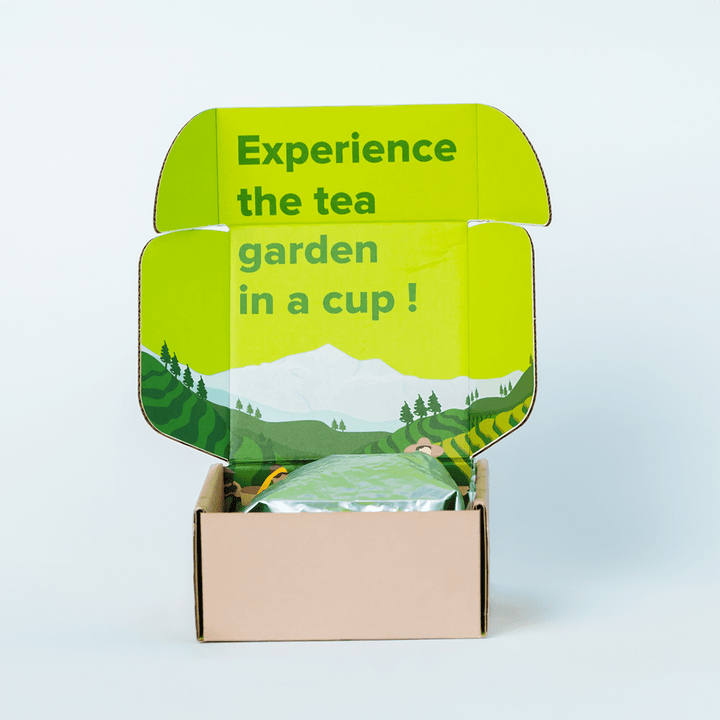How to brew Black teas!
As seen in
Enjoy a calming boost of energy and experience better health with this organic black tea and it's anti-oxidant rich liquor
Camellia Sinensis (Green Leaves)
You may also like
Not to my liking. I like a smoother black tea.
I like this tea. I add cream and little sugar to my hot tea. This one is very nice and has bolder flavor for cream.
This tea is smooth and fruity with a herb like touch
It's become one of my favorites. Ever so slightly smoky and very resteepable.

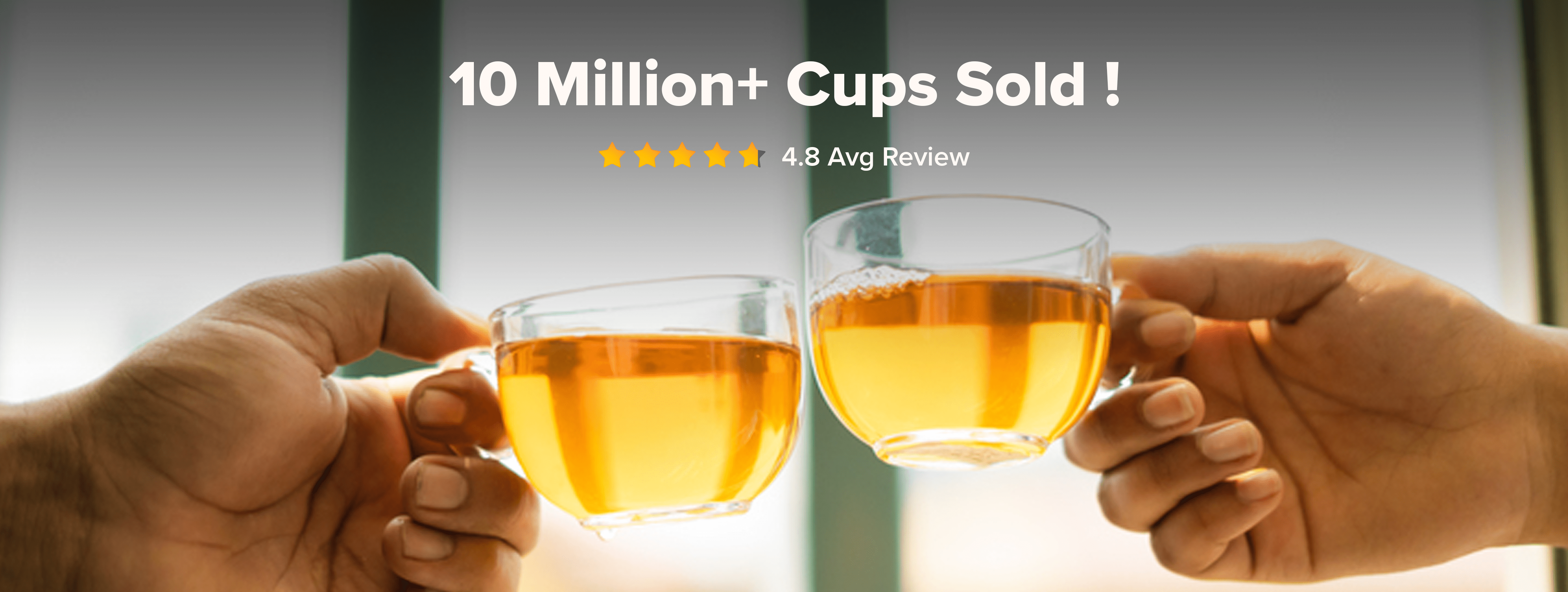






Enjoy a calming boost of energy and experience better health with this organic black tea and it's anti-oxidant rich liquor
Camellia Sinensis (Green Leaves)
Kanchanjangha Tea Estate and Research Center Pvt. Ltd. (KTERC). KTERC is the first certified organic tea garden in Nepal that was established in 1984 by Mr. Deepak Prakash Baskota to rid his community of poverty. It remains a model social enterprise still today, that runs on cooperative infrastructure and is truly focused on the people and planet before profit.
Our classic organic black tea is made from the same process and, believe it or not, same machines that we used about 30 years ago. The processing technique was taught to our current factory manager by our long time tea maker from Darjeeling. Hence, the make, character and feel is almost the exact same as Darjeeling Second Flush. However, what really separates Nepali origin black teas from Darjeeling black teas is the age of the tea bushes. Nepali trea bushes are quite young around 50 years old while Indian tea bushes are almost 200 years old. This creates a fresher, more floral undertone in all of our teas.
In terms of the actual production, all black teas go through mainly four different steps - withering, rolling, oxidation and drying. Generally, two leaves and a bud are plucked during the summer season from every bush in an interval of 7 days. During the summer, with the right amount of heat and rainfall, the tea bushes are at their peak maturity time and that is the busiest time in tea production. The carefully plucked leaves are withered in withering troughs for several hours, sometimes even overnight depending on the type of leaves and the season. With the majority of the water evaporated, the rubbery leaves are then placed on a rolling machine tobruise and break the cells of the tea leaves to let them react with the oxygen in the air. After almost half an hour of a rolling process, the teas are then set to oxidize for several hours depending on what characteristics of black tea is required. After optimal oxidation, the tea maker carefully dries the tea in a drying machine, capturing the peak aromas and flavors. The DMT (Dryer Mouth Tea) is then placed though several tea sorting machines that result in different grades of teas such as SFTGFOP1, TGBOP, GOF and so on. After machine sorting, the teas also go through a manual hand-sorting before being packed and sent to our customers.
Our tea garden is nestled in the foothills of Mt. Kanchenjunga, the third highest mountain in the world, in the eastern part of Nepal. Located precisely near the western borders of Darjeeling, India and north of the Illam, the most famous tea growing region in Nepal, our small village enjoys the best of both worlds. Situated at an altitude of 1300-1800 meters (4,200 - 6000 feet), the area enjoys a pristine himalayan climatic conditions to produce highly unique and aromatic teas.
This loose leaf black tea is perfect for everyday tea drinkers, especially those who love a classic english breakfast or earl grey. People who love single origin teas from assam or darjeeling will find much similarity to this tea and will surely appreciate its distinct flavor profile.

A leisurely activity full of sensory storytelling, this guided tea tasting allows for a great team-building experience.
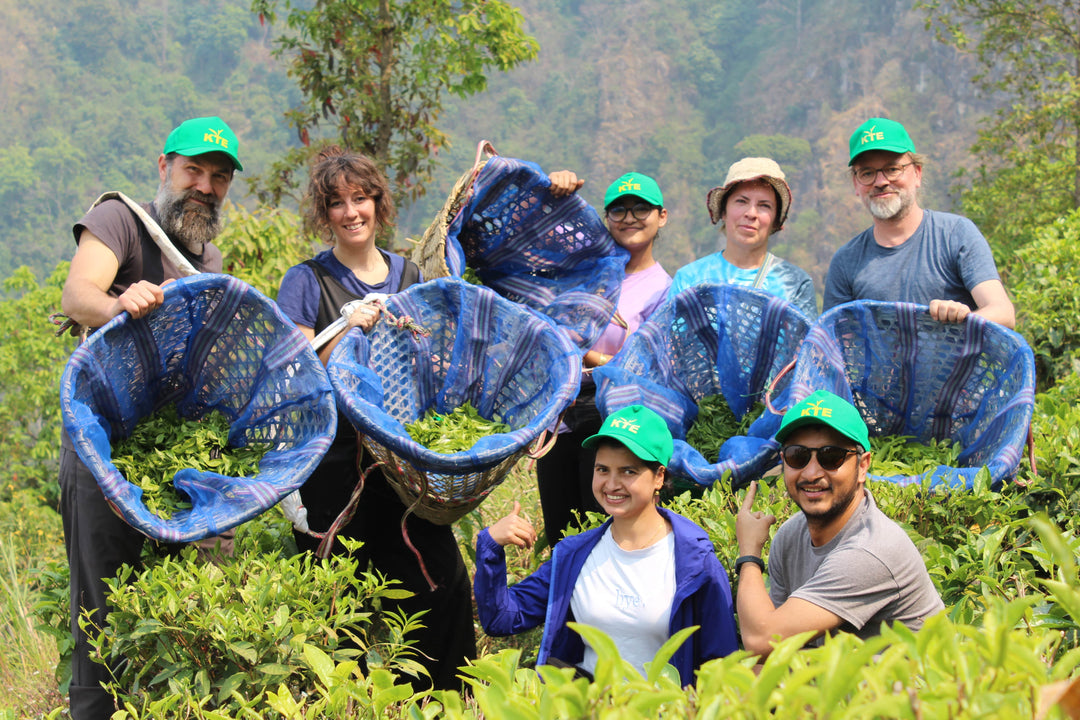
Experience the tender ways of Nepali teas and the social change it garners.
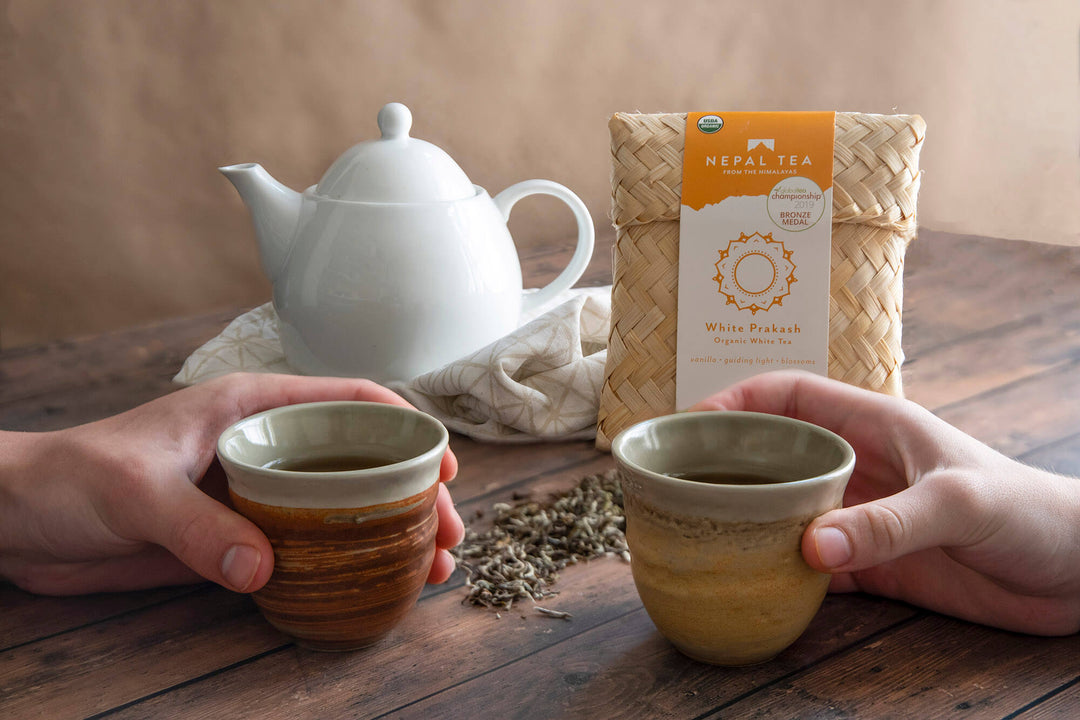
This gift box comes with the choicest varieties of brew. Every month, you get a little pause of delight for you and your loved ones at your doorstep.
Subscribe today and get 20% off your first purchase




